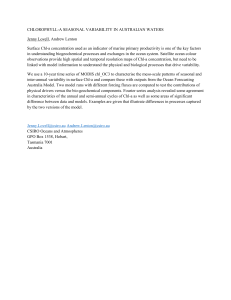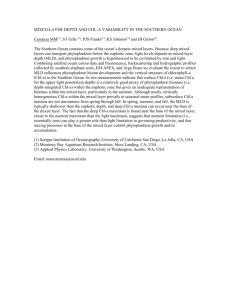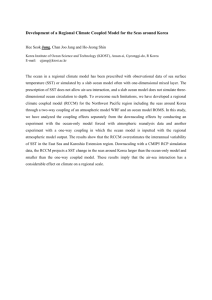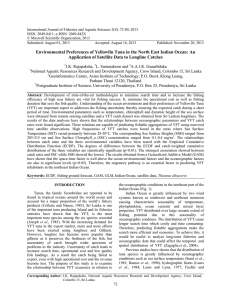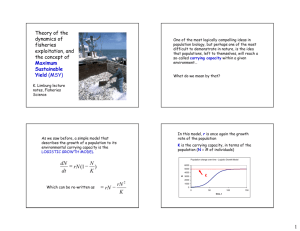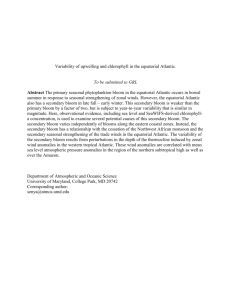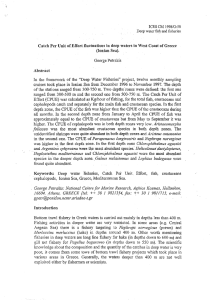Climatic and marine environmental variations
advertisement
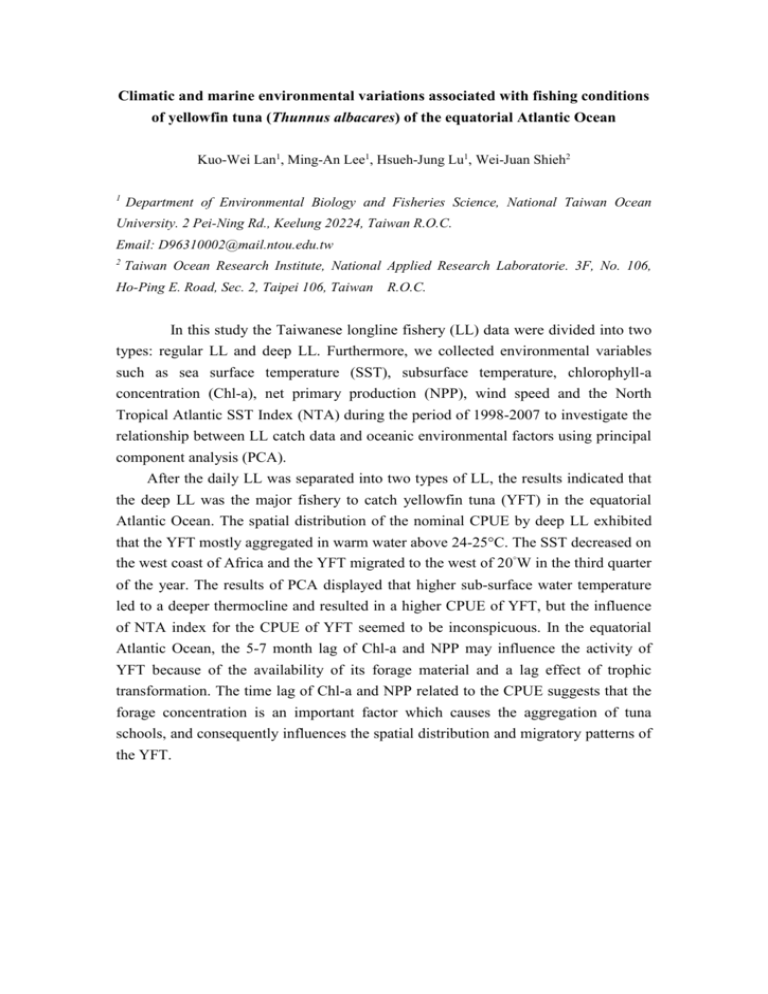
Climatic and marine environmental variations associated with fishing conditions of yellowfin tuna (Thunnus albacares) of the equatorial Atlantic Ocean Kuo-Wei Lan1, Ming-An Lee1, Hsueh-Jung Lu1, Wei-Juan Shieh2 1 Department of Environmental Biology and Fisheries Science, National Taiwan Ocean University. 2 Pei-Ning Rd., Keelung 20224, Taiwan R.O.C. Email: D96310002@mail.ntou.edu.tw 2 Taiwan Ocean Research Institute, National Applied Research Laboratorie. 3F, No. 106, Ho-Ping E. Road, Sec. 2, Taipei 106, Taiwan R.O.C. In this study the Taiwanese longline fishery (LL) data were divided into two types: regular LL and deep LL. Furthermore, we collected environmental variables such as sea surface temperature (SST), subsurface temperature, chlorophyll-a concentration (Chl-a), net primary production (NPP), wind speed and the North Tropical Atlantic SST Index (NTA) during the period of 1998-2007 to investigate the relationship between LL catch data and oceanic environmental factors using principal component analysis (PCA). After the daily LL was separated into two types of LL, the results indicated that the deep LL was the major fishery to catch yellowfin tuna (YFT) in the equatorial Atlantic Ocean. The spatial distribution of the nominal CPUE by deep LL exhibited that the YFT mostly aggregated in warm water above 24-25°C. The SST decreased on the west coast of Africa and the YFT migrated to the west of 20°W in the third quarter of the year. The results of PCA displayed that higher sub-surface water temperature led to a deeper thermocline and resulted in a higher CPUE of YFT, but the influence of NTA index for the CPUE of YFT seemed to be inconspicuous. In the equatorial Atlantic Ocean, the 5-7 month lag of Chl-a and NPP may influence the activity of YFT because of the availability of its forage material and a lag effect of trophic transformation. The time lag of Chl-a and NPP related to the CPUE suggests that the forage concentration is an important factor which causes the aggregation of tuna schools, and consequently influences the spatial distribution and migratory patterns of the YFT.
